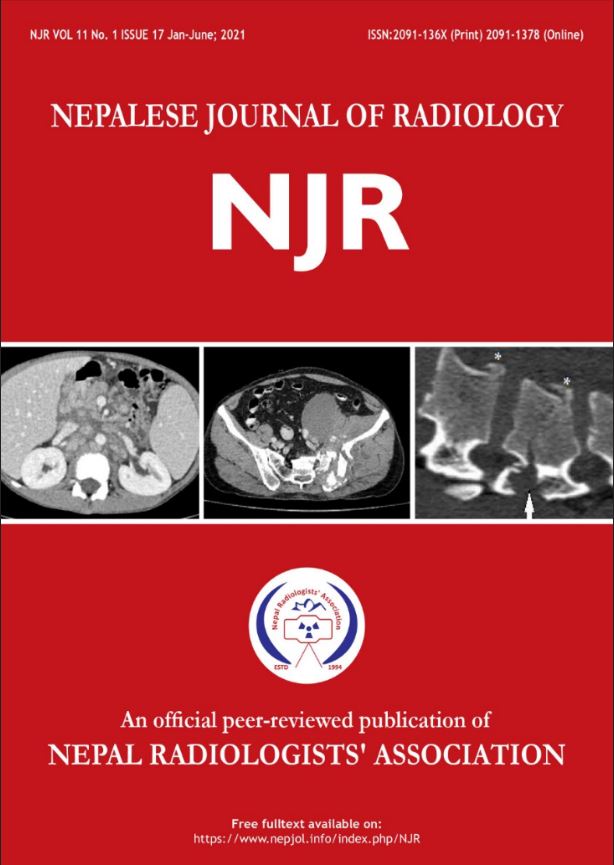Assessment of Chance fracture on Computed Tomography Scan in Tertiary Trauma Care Center of Nepal.
DOI:
https://doi.org/10.3126/njr.v11i1.38545Keywords:
Chance fracture, Vertebral Body, Computer tomographyAbstract
Introduction:
Chance fracture is a horizontal fracture of the vertebra extending from the posterior element to the vertebral body due to flexion-distraction injury and is potentially unstable. The aim of this study was to evaluate the demography and Computed Tomography scan findings in Chance fracture of the spine.
Method:
A retrospective study was conducted at the National Trauma Center, National Academy of Medical Sciences over a period of one year (December 2019 to December 2020). Demographic data, mechanism of injury, and computed tomographic findings of Chance fracture were recorded.
Result:
Computed tomography scans of 41 patients with Chance fracture were identified. Fall injury (76%) was the most common cause of Chance fracture followed by road traffic accidents. This fracture was most commonly seen in thoracolumbar junction TLJ (D10-L2); with L1 being the most affected vertebra (36.5%). Among posterior elements, facet distraction (84%) was the most common finding followed by lamina fracture (83%), and pedicle fracture (68%). Regarding vertebral body fracture, involvement of both superior and inferior endplates were common than isolated involvement of either one of them. CT revealed that a burst component was a common finding (68%) in Chance fracture.
Conclusion:
Chance fracture was commonly caused by fall injury in our context which is higher in incidence than previously reported. More than half of patients with Chance fracture also had Burst-type components that could influence surgical management. Computed tomography scans is a useful imaging modality for the assessment of Chance fracture and burst component.
Downloads
Downloads
Published
How to Cite
Issue
Section
License
Copyright (c) 2021 Nepalese Journal of Radiology

This work is licensed under a Creative Commons Attribution 4.0 International License.
This license enables reusers to distribute, remix, adapt, and build upon the material in any medium or format, so long as attribution is given to the creator. The license allows for commercial use.




